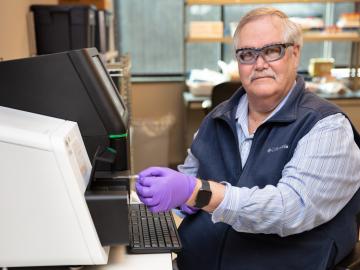
Filter News
Area of Research
- (-) Biological Systems (18)
- (-) Biology and Environment (177)
- (-) Isotopes (35)
- Advanced Manufacturing (34)
- Biology and Soft Matter (5)
- Building Technologies (12)
- Chemical and Engineering Materials (4)
- Chemistry and Physics at Interfaces (11)
- Clean Energy (522)
- Climate and Environmental Systems (14)
- Computational Biology (6)
- Computational Chemistry (5)
- Computational Engineering (5)
- Computer Science (19)
- Data (1)
- Earth Sciences (1)
- Electricity and Smart Grid (3)
- Energy Frontier Research Centers (14)
- Energy Sciences (5)
- Fossil Energy (3)
- Fuel Cycle Science and Technology (3)
- Functional Materials for Energy (16)
- Fusion and Fission (54)
- Fusion Energy (17)
- Geographic Information Science and Technology (3)
- Isotope Development and Production (3)
- Materials (433)
- Materials Characterization (2)
- Materials for Computing (36)
- Materials Synthesis from Atoms to Systems (13)
- Materials Under Extremes (12)
- Mathematics (1)
- National Security (79)
- Neutron Data Analysis and Visualization (4)
- Neutron Science (190)
- Nuclear Science and Technology (74)
- Nuclear Systems Modeling, Simulation and Validation (3)
- Nuclear Systems Technology (1)
- Quantum Condensed Matter (4)
- Quantum information Science (9)
- Reactor Technology (1)
- Renewable Energy (4)
- Sensors and Controls (5)
- Supercomputing (311)
- Transportation Systems (11)
News Topics
- 3-D Printing/Advanced Manufacturing (11)
- Advanced Reactors (1)
- Artificial Intelligence (9)
- Big Data (9)
- Bioenergy (47)
- Biology (73)
- Biomedical (22)
- Biotechnology (13)
- Buildings (2)
- Chemical Sciences (11)
- Clean Water (11)
- Climate Change (40)
- Composites (5)
- Computer Science (20)
- Coronavirus (13)
- Critical Materials (1)
- Cybersecurity (1)
- Decarbonization (19)
- Energy Storage (8)
- Environment (89)
- Exascale Computing (4)
- Frontier (3)
- Fusion (1)
- Grid (3)
- High-Performance Computing (20)
- Hydropower (8)
- Irradiation (1)
- Isotopes (25)
- Machine Learning (8)
- Materials (15)
- Materials Science (8)
- Mathematics (3)
- Mercury (7)
- Microscopy (10)
- Molten Salt (1)
- Nanotechnology (7)
- National Security (4)
- Net Zero (2)
- Neutron Science (4)
- Nuclear Energy (4)
- Partnerships (5)
- Physics (2)
- Polymers (2)
- Renewable Energy (1)
- Security (3)
- Simulation (14)
- Space Exploration (4)
- Summit (10)
- Sustainable Energy (30)
- Transformational Challenge Reactor (1)
- Transportation (3)
Media Contacts
![Coexpression_hi-res_image[1].jpg Coexpression_hi-res_image[1].jpg](/sites/default/files/styles/list_page_thumbnail/public/Coexpression_hi-res_image%5B1%5D_0.jpg?itok=OnLe-krT)
While studying the genes in poplar trees that control callus formation, scientists at Oak Ridge National Laboratory have uncovered genetic networks at the root of tumor formation in several human cancers.

Scientists at the Department of Energy’s Oak Ridge National Laboratory have created a recipe for a renewable 3D printing feedstock that could spur a profitable new use for an intractable biorefinery byproduct: lignin.
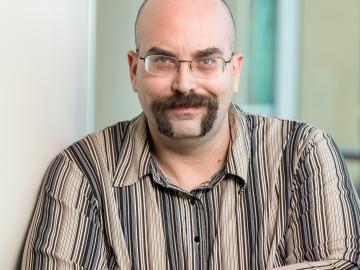
Attracted to biology, math, and physics as a young student, Omar Demerdash decided that when the time came to narrow his academic interests he wouldn’t pick and choose: he’d pursue them all. Today he’s using his expertise in computational biophysics to model and analyze how molecules interact with p...
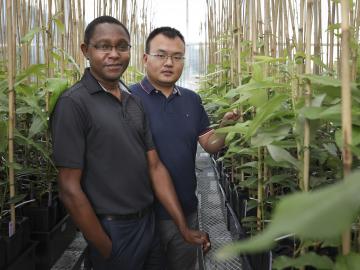
For decades, biologists have believed a key enzyme in plants had one function—produce amino acids, which are vital to plant survival and also essential to human diets. But for Wellington Muchero, Meng Xie and their colleagues, this enzyme does more than advertised. They had run a series of experiments on poplar plants that consistently revealed mutations in a structure of the life-sustaining enzyme that was not previously known to exist.
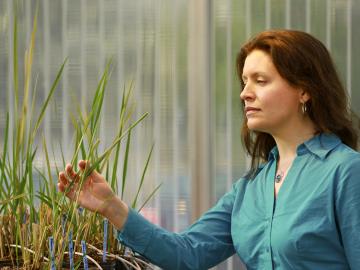
Esther Parish’s holistic approach to life is apparent not only in her environmental research at Oak Ridge National Laboratory, but in her careful cultivation of a future crop of young scientists. Her expertise as a geographer coupled with a keen interest in the natural world drives Parish’s resea...

Dan Jacobson is illuminating the workings of biological systems from the molecular scale up by leveraging Oak Ridge National Laboratory’s supercomputing resources to create machine- and deep-learning techniques more easily understood by humans
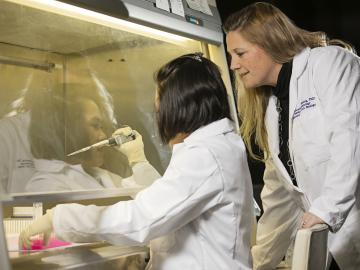
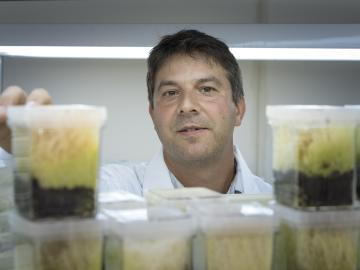
David Weston became fascinated with plant genetics and ecology in college, and now with the support provided by the DOE Office of Science Early Career Research Program, he will link those fields as he studies plant-microbe symbiosis. The research will focus on sphagnum moss, a dominant plant of n...

Working backwards has moved Josh Michener’s research far forward as he uses evolution and genetics to engineer microbes for better conversion of plants into biofuels and biochemicals. In his work for the BioEnergy Science Center at ORNL, for instance, “we’ve gotten good at engineering microbes th...



